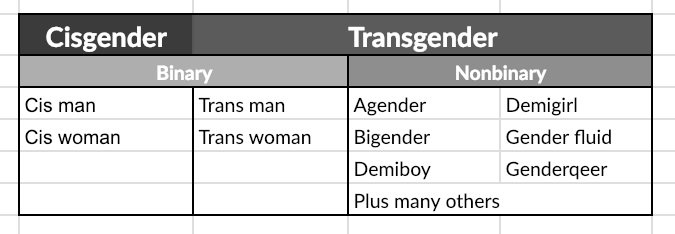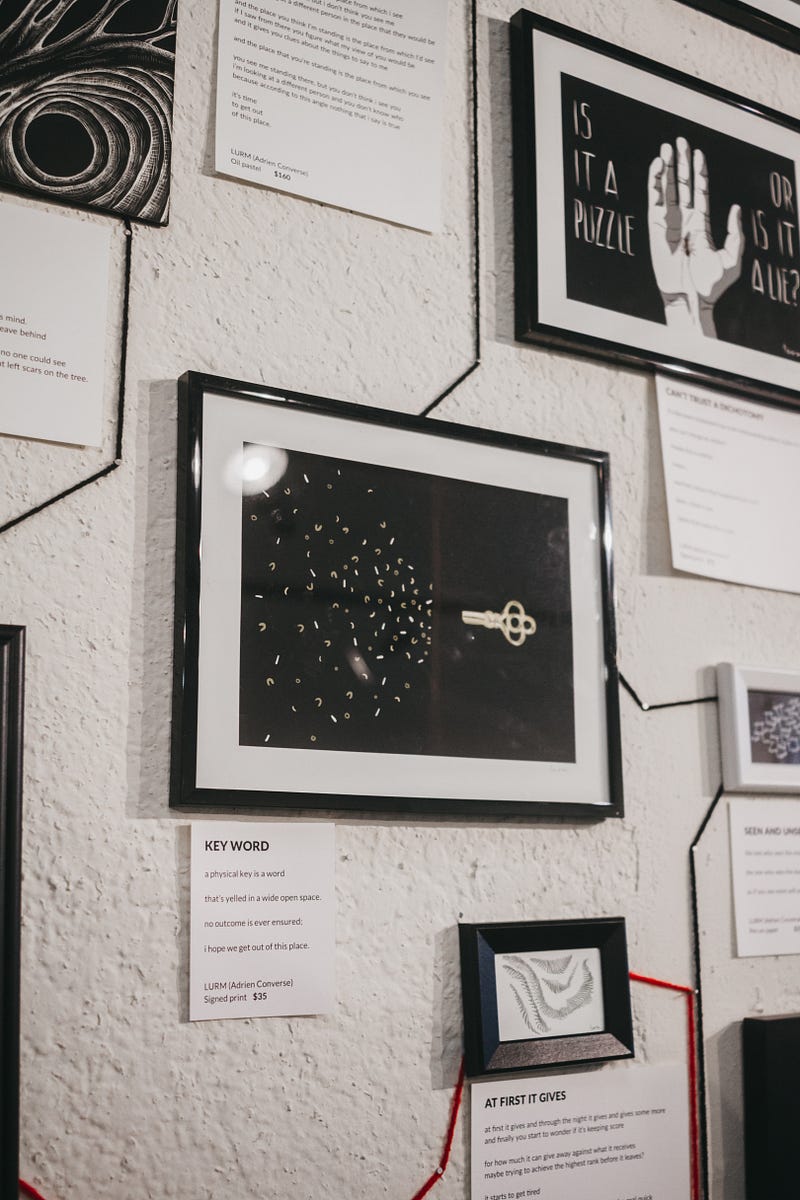Deconstructing Barriers on the Internet
Bellingham resident uses technology to share LGBTQ+ education
By Jaya Flanary

After choosing the women’s restroom this time, Adrien Converse exits the stall and sees a woman touching up her makeup at the mirror. In the reflection, the woman sees Converse — tall, skinny, with short brown hair — and goes pale, pulling out her pepper spray.
“Since that happened, I tend to use the men’s room,” Converse said. “Men tend to be less hypervigilant, which makes sense because they’re less likely to get attacked.”
Converse, 31-year-old co-founder of Bellingham’s Overthink Group, is agender, and prefers the pronouns they/them/theirs. According to Converse, while gender does not personally compute to them, they believe and support that other people experience gender.
Converse is a search engine optimization strategist, meaning they are an expert at increasing a website’s traffic by expanding its visibility on various search engines. In an average month, Converse said roughly 15,000 people ask Google what agender means and at least 25,000 people search for all of the genders.
“A list of all the genders,” Converse said, laughing. “Which is funny because it’s kind of missing the point, but that’s the thing that people are really curious about.”

When they came out, Converse said there was a lack of resources and information online about the nonbinary experience.
Western’s LGBTQ+ Director L.K. Langley, who identifies as genderqueer and uses they/them pronouns, said they find it challenging to vet out the useful sources from misinformation.
Langley believes the internet provides opportunities for cis and heterosexual people to learn about LGBTQ+ identities and how to be respectful and inclusive of those experiences. “That can make information more accessible and not put a burden on LGBTQ+ people to always be doing the education,” Langley said.
Converse remembers their experience with sex education, where the curriculum was geared toward those who are straight and cisgender. “You have to figure out how to pretty much build your entire story of what’s going on with you,” Converse said. “A lot of times, [people] don’t even believe you.”
According to the Guttmacher Institute, seven states require negative information on homosexuality and/or positive emphasis on heterosexuality. Although Washington state is not one of these, Washington’s Healthy Youth Act only requires sexual education in public schools to “be medically and scientifically accurate.”
“It is hard work on many levels to try to convince people who don’t believe in the veracity or reality of trans existence,” Langley said. “Gender is, in many ways, incredibly complicated. In other ways, it’s very simple: people know who they are.”

In 2011, Converse heard the term ‘genderqueer’ on TV, which encompasses anyone who feels disconnected from a binary gender system.
“I was seeing people who were gender fluid… Still very expressive of gender who are using this word ‘genderqueer’ for themselves and it made me feel like I wasn’t part of that either,” Converse said.
Converse’s tech background led to the creation of their website, Deconforming, where they write and post articles on LGBTQ+ topics.
“I don’t like thinking as though I’m speaking on behalf of other people,” Converse said. “I am part of a demographic that has been silenced and I’m sharing my perspective as a way of elevating that whole demographic.”
Content for the site is based on trends Converse sees online through Google Trends, Ahrefs and a closed Facebook group of nearly 11,000 nonbinary-identifying members worldwide. Converse synthesizes information, creating essential content for online users.

“As adults who want to be contributing and engaged members of our society,” Langley said. “It is incumbent upon us to continue our own self educations around gender identity, sexuality, racial identities, dynamics of power and privilege broadly.”
Platforms like closed Facebook groups and the Deconforming site have become safe spaces for nonbinary folks to share experiences. “I have lost count of the number of people who have come out to me,” Converse said. “That’s a really beautiful aspect of themselves and they share it with me.”
Before coming out, Converse was going by the nickname “Lurm,” which became the pseudonym Converse uses for their visual art and music.
[embed]https://soundcloud.com/iamlurm/hello[/embed]
In one of Converse’s articles, “This is not a woman’s body,” they describe how their obsession with art came to be.
“Most of my life I’ve felt completely disconnected from my body. And as a result, disconnected from a society that only understands me through my body,” they said. “I’ve come to be able to use [art] to express things that I never could with my physical body — things that people take for granted that they can express in a casual gesture or a smile.”
Converse shares a gallery in Bay Street Village. They use different mediums and their art ranges in style and color, making each piece unique. As you walk up the stairs to the studio space, your eye is immediately drawn to a wall of framed art, each connected to another by a red or black piece of yarn.

“A lot of the pieces are thematically connected,” Converse said. “I like to leave a lot of unanswered questions [and] give people ways to try to find the answer.”
When Converse isn’t writing articles, making art or working at Overthink Group, they play improv music at the Upfront Theatre. Once, Converse painted an improv piece using the audience’s ideas and emotions for inspiration. Now, the colorful piece of plywood sits in Converse’s studio loft.
“People are sort of caught up in streams of influence that they don’t really understand, and I’m really fascinated by the process of untangling those,” Converse said. “Even when people are hurting each other, it’s not coming from a desire to hurt other people, it’s coming from a misunderstanding of what’s going on.”
